Not a lot of people have heard about Sound Technologies, and that’s a good thing. The company, which specializes in engineered noise control for industrial applications, has been in Michigan City since 1991.
A lot of people think of civil and architectural acoustics when they hear of Sound Technologies, but one look at the website (www.soundtech.us) and it is obvious that there is a lot of engineering and heavy fabrication involved in the products they provide. Sound Technologies is a business-to-business company operating a global sales strategy out of their offices in Michigan City.
“I was in a similar business in Chicago and recognized a market need for tuned fan silencers that was not being met,” said Dominic Crnkovich, the founder and president. “I’m the only one left of the original partners.”
He said the business wound up in Michigan City because one of the original partners lived in the city and it’s where the company found affordable plant space. Another partner in the business is Ian R. Brewe, the manager of acoustic design. Brewe is originally from Michigan City and had worked at Sound Technologies over the years. He came back to join the business as an equity partner in 2006 after finishing his graduate work in San Diego, CA.
Scott Schreeg, sales and marketing manager, said the fabrication shop recently moved from a small plant on Sheridan Avenue to a 23,000-square-foot plant on west U.S. Hwy. 12. Their shop happens to be across from the NIPSCO generating plant, which they have provided equipment to in the past. In addition to the extra production space they have been running two shifts to keep up with order activity. The plant mainly fabricates stack silencers used to quiet gas turbine exhaust in power generation applications. Sound Technologies will design each silencer based on a client’s noise specification and ship them all over the world for final installation. Sound Technologies also has a network of global fabrication partners it leverages when products need to be produced more local to a specific job site.
“These silencers are like baffles,” said Schreeg. The required noise level exiting the exhaust stack dictates the baffle size. The stricter the noise requirement, the bigger the baffle. The baffles are weldments that are packed with acoustic fill, which is sealed in with perforated metal. The baffles are typically installed in vertical rows in the exhaust stack.
“Sound Technologies customers are from various tiers of the overall supply chain for power generation projects,” said Schreeg. Historically they have included the end user being the utility or independent power producer to the large engineering, procurement and construction firms that provide turnkey project support. Sound Technologies also works indirectly with these firms through other OEMs that supply equipment for power generation applications. The most popular being the heat recovery steam generator (HRSG) manufacturers.
Within the last year, Sound Technologies has hired a business development manager to focus on new technologies and markets for noise control. Tucker York joined the business and brings a wealth of industry experience along with an engineering background in acoustics. Tucker will be leading growth strategies to add new products that the current customer base is asking for as well as developing totally new markets that require an engineered noise control approach.
“Utilizing gas turbines to generate electricity specifically in a combined cycle configuration will continue to grow,” said Schreeg. These plants are popular globally because they offer an efficient way to meet the growing demand for electricity and can be built quickly compared to other alternatives. Renewable energy options are growing rapidly, which don’t have a lot of noise control requirements like gas and coal. However, the rapid growth of renewables only puts a small dent in the overall electricity generation supply. The availability and flexibility of gas turbine plants will remain the most attractive solution for providing large scale power for the foreseeable future.
“We typically get involved early in the design phase for these new power plants to help provide design suggestions for meeting the noise criteria. Sound Technologies has built a loyal customer base by providing innovative solutions that meet customers’ project goals including performance, price and leadtime,” said Schreeg.
From that modest start in a small, 8,000-square-foot shop, Sound Technologies today has 23 employees who design and manufacture some of the most sophisticated sound attenuating products in the world. Among the customers who have used Sound Technologies products are NIPSCO, Siemens, General Electric and ArcelorMittal.
As for the tuned silencer niche that helped start the business, the product line is alive and well. Tuned silencers are typically used to reduce the tonal noise produced by large industrial fans. They are installed in the gas path for the fan exhaust and target the reduction of noises at specific frequencies. This market is growing as well as more and more fans are being used in power plant emissions systems to control air pollution.

